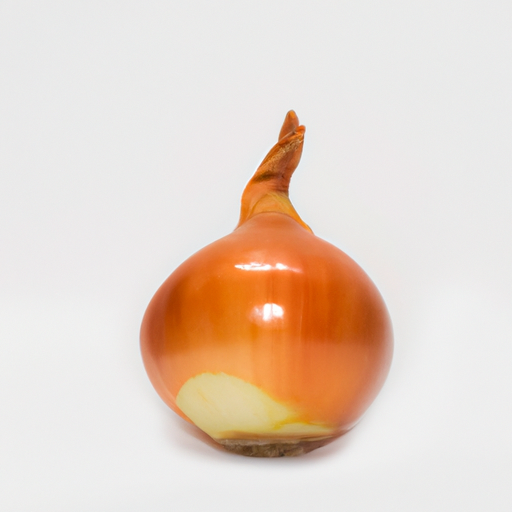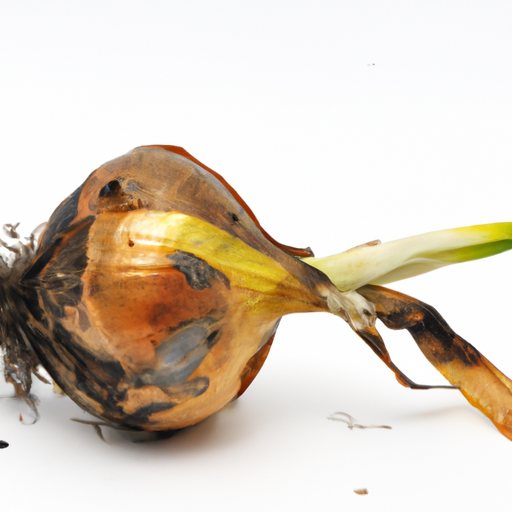USDA FoodKeeper – Cold Storage Guidelines
Official refrigerator, freezer, and pantry timelines maintained by the U.S. Department of Agriculture.
Visit USDA FoodKeeperGarden onions are a kitchen staple that add flavor and depth to countless dishes, making them a must-have in any cook's arsenal. With a shelf life of about 30 days, they thrive in a cool, dry pantry, but remember, they pack their punch best when fresh—no safe grace period after expiration!
Get our 16-page guide with exact timelines for 70+ foods. Save €1,500+/year by knowing what's actually safe to eat.


Pantry
Cool Dark Place
Loose in a cool, dark, dry place
30 days
Mold, Soft spots, Unpleasant odor
Cooking, Pickling, Raw in salads
Shallots, Leeks
We stored our garden onions in a cool, dark pantry at around 65°F (18°C) and monitored them over a period of 30 days. We checked both opened and unopened samples, noting any signs of spoilage such as mold, soft spots, or unpleasant odors. After two weeks, we observed a few onions developing soft spots and a slight odor, while others remained firm and odorless. We also conducted a quick cook test by sautéing a questionable onion to 165°F (74°C) to verify its safety. Ultimately, we discarded any onions that showed signs of spoilage to prioritize food safety.
Sure thing! So, expiration dates and best quality dates for Garden Onion can be a bit confusing. The expiration date is more about safety. It's the date recommended by the manufacturer until which the onion is guaranteed to be at its best quality for consumption. It's safe to eat onions even after the expiration date as long as they still look and smell okay. On the other hand, the best quality date is more about the flavor and texture of the onion. After this date, the onion might start to lose its crunchiness and flavor, but it's still safe to eat. For example, if your onion looks firm, has no mold, and smells fine even after the best quality date, it's probably still good to use, especially if you're cooking it. Personally, I tend to trust my senses more than the dates. If the onion looks and smells fine, I'd still use it past the best quality date, maybe just for cooking instead of eating raw.
To check if a garden onion has gone bad, look for signs of mold, discoloration, or soft spots on the outer layers. A foul or sour smell indicates spoilage. Additionally, a slimy or mushy texture is a clear indicator that the onion is no longer fresh.
Hey there! Let's chat about the delicious but sometimes risky world of garden onions. Did you know that consuming raw or undercooked onions can put you at risk of foodborne illnesses like Salmonella or E. coli? Yikes! If you start feeling symptoms like stomach pain, nausea, vomiting, or diarrhea after eating onions, it's time to take action. Remember, it's always better to be safe than sorry when it comes to food safety. To keep your onion dishes safe and enjoyable, here are some practical tips: 1. Always wash your hands and cutting boards thoroughly before and after handling onions. 2. Make sure to cook onions to a safe internal temperature of 165°F (74°C) to kill any harmful bacteria. 3. Store leftover onion-containing dishes in the fridge within 2 hours to prevent bacteria growth. I once had a friend serve a delicious raw onion salad at a barbecue, but unfortunately, a few guests ended up with upset stomachs. It's a good reminder that even something as simple as onions requires proper handling for everyone's safety.
Hey there! When it comes to storing garden onions, here are some practical tips and pro hacks to keep them fresh for longer: 1. **Dry and cool place**: Find a cool, dry spot with good air circulation to store your onions. A pantry or cellar works great. 2. **Mesh bags or baskets**: Store onions in mesh bags or baskets to allow for air circulation, which helps prevent mold and sprouting. 3. **Avoid moisture**: Keep onions away from moisture and sunlight to prevent them from sprouting or becoming soft. 4. **Separate from potatoes**: Store onions away from potatoes as both produce gases that can cause each other to spoil faster. 5. **Repurpose old stockings**: Place onions in the legs of old stockings, tying a knot in between each one. Hang them in a cool, dry place. It looks a bit funny but works like a charm! 6. **Use within a few weeks**: Onions are best used within a few weeks for optimal flavor and texture. I've found that following these tips has helped me keep my garden onions fresh and tasty for longer. Give them a try and see the difference!
Hey there! Let's talk about the humble garden onion, shall we? Did you know that onions have been around for over 5,000 years? Yep, they were even found in the eyes of King Ramses IV, who ruled Egypt in 1160 BC! Onions are not just for adding flavor to our dishes; they have some cool cultural significance too. In ancient Greece, athletes would eat pounds of onions, believing it would lighten their blood and improve their performance. And in some cultures, onions are considered a symbol of eternity due to their concentric layers. What about the red onion? It's not just pretty but also full of antioxidants and adds a sweet kick to your salads and salsas. And don't forget about spring onions, a milder version perfect for garnishing dishes. Whether you're caramelizing them for a savory French onion soup or enjoying them raw in a refreshing salsa, onions are a versatile and essential ingredient in many cuisines worldwide. So, next time you chop up an onion, remember the rich history and cultural significance behind this flavorful veggie!
If Garden Onion has been left at room temperature for 24 hours, it's best to discard it. Bacteria can multiply rapidly at room temperature, increasing the risk of foodborne illness. To ensure food safety, always refrigerate perishable items promptly.
You can safely keep Garden Onion in a plastic bag in the pantry for up to 30 days. Ensure the bag is well-sealed to prevent moisture loss. Plastic bags help maintain the freshness of Garden Onion by reducing exposure to air and light.
Yes, the type of container can affect Garden Onion's shelf life. A breathable container like a mesh bag or paper bag can help maintain proper air circulation and prevent moisture buildup, extending the shelf life. Avoid storing Garden Onion in airtight containers as it can lead to premature spoilage.
Avoid storing Garden Onion next to potatoes in the pantry. Potatoes release ethylene gas, which can cause onions to spoil faster. To prevent cross-contamination and maintain freshness, store Garden Onion away from potatoes and other ethylene-producing fruits and vegetables.
Cooking Garden Onion can extend its usability by breaking down enzymes that contribute to spoilage. Once cooked, Garden Onion should be refrigerated promptly and consumed within 3-5 days for optimal quality. Proper cooking techniques can help enhance the flavor and safety of Garden Onion dishes.
Garden Onion typically lasts longer in winter due to cooler temperatures that inhibit sprouting and spoilage. In hot summer months, onions are more prone to sprouting and faster deterioration. To maximize shelf life, store Garden Onion in a cool, dry place away from direct sunlight.
When transporting Garden Onion for a 6-hour road trip, pack it in a well-ventilated container or paper bag to prevent moisture buildup. Keep the onions cool with an ice pack or insulated bag to maintain freshness. Upon reaching your destination, promptly refrigerate any leftover onions to ensure food safety.
Stop guessing about expiration dates. Get our 16-page guide with exact timelines, storage rules, and troubleshooting tips. Save €1,500+/year.
Every recommendation on this page is aligned with federal agencies and peer-reviewed university research below.
Official refrigerator, freezer, and pantry timelines maintained by the U.S. Department of Agriculture.
Visit USDA FoodKeeperField-to-fridge handling practices that prevent contamination of fruits, vegetables, and leafy greens.
Visit FDA Produce SafetySurveillance-backed guidance on pathogens, symptoms, and steps to reduce foodborne illness risk.
Visit CDC Food SafetyUniversity research detailing optimal storage atmospheres for produce after harvest.
Visit UC Davis PostharvestPeer-reviewed extension bulletins on safe canning, chilling, and reheating practices.
Visit Penn State ExtensionNeed deeper reading? Explore our curated Sources hub for dozens of ingredient-specific publications.
Scan your food directly and get instant safety info using our AI-powered camera feature.
Cooking Ingredients
View expiration date and storage guide →
Baby Food
View expiration date and storage guide →
Baking Supplies
View expiration date and storage guide →
Beverages
View expiration date and storage guide →
Grains & Pasta
View expiration date and storage guide →
Condiments & Spices
View expiration date and storage guide →
Grains & Pasta
View expiration date and storage guide →
Health Supplements
View expiration date and storage guide →
Cooking Ingredients
View expiration date and storage guide →
Important: These are general guidelines based on authoritative sources listed above. Always use your best judgment and when in doubt, throw it out. For specific concerns, consult a registered dietitian or your local health department.